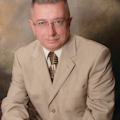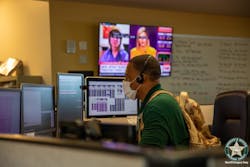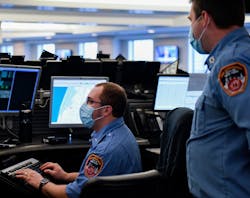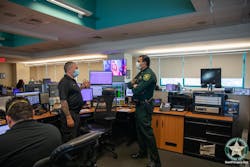9-1-1 Dispatchers on the Front Lines of the COVID-19 Pandemic
Editor's note: Find Firehouse.com's complete coverage of the COVID-19 pandemic here.
They often sit in windowless rooms, illuminated only by the eerie glow that emanates from the bank of monitors that face them. Much of what goes on here cannot be heard; muffled by the surgical masks that are increasingly worn under headsets. Today the familiar cans of Diet Coke and Red Bull sit side by side with bottles of hand sanitizer and disinfectant spray. These are the faceless voices on the front lines of our war against COVID-19. These are the public safety dispatchers.
Call volumes fluctuate in communications centers during any emergency. However, unlike the spectacular fire on main street, or even the foot of freshly fallen snow that stops the city dead, this disaster will not end in a few hours or days.Call volumes
But it is the volume and type of calls being received by 9-1-1 centers nationwide that paint a picture of our current landscape. Dispatchers in Florida report receiving complaints about people assembling on the beach. One such call came from a person watching that town’s seaside webcam from their home hundreds of miles away in New York. In Genesee County, MI, the majority of 9-1-1 calls now deal with coronavirus questions and reports of social distancing violations. When citizens are told that police won’t be sent, they hang up and call the police department directly.
Elsewhere around the country, a decrease in traffic accidents due to stay-at-home orders, and an increase in domestic violence for the same reason are noted. In areas where child abuse cases are down, authorities are concerned that this is directly related to lack of outside contact. Although many of these observations may be just that—observations—since significant time has not elapsed to collect and analyze data, the problem of inappropriate calls is universal. The news carries stories every day of public safety agencies worldwide asking people to refrain from calling emergency numbers with non-emergencies.
Authorities in California reported several calls about coughing neighbors. In Halton, Ontario, Canada, it’s sneezing, not coughing, that brings folks to their phones. Police in Newport, OR, received enough complaints of supply shortages for them to announce on their Facebook page, “It's hard to believe that we even have to post this. Do not call 9-1-1 just because you ran out of toilet paper.”
Jason Barbour, director of the Johnston County, NC, Emergency Communications Center, and past president of the National Emergency Number Association (NENA) detailed some of the challenges being faced by his agency. “We locked down the center three weeks ago to everyone who is not a telecommunicator. Administrative personnel are all working elsewhere to limit exposure. This is the only way to handle this situation without medical intervention”
Barbour went on to say that call volume has dropped slightly, and that all reports are treated with the assumption that the caller is potentially infected. With an eye on even further distancing, Johnston County has worked with their radio vendor on a means to use laptops and internet access to control transmitters. According to Barbour, “We could always answer our phones at other locations, and even use pencils and paper instead of computer-aided dispatch (CAD.) This solution has removed the brick wall of being able to receive 9-1-1 calls anywhere, but not being able to retransmit the information to our units.”
One dispatcher's story
Perhaps the greatest impact of this pandemic can be felt in this passage, written by a dispatch supervisor, married to a firefighter, and who wishes to remain anonymous. It’s a poignant reminder that we are often family in more than name alone.
“The week the media reported the first confirmed case of coronavirus in our state, my husband responded to an elderly patient with chest pains. That patient died at the local hospital the next day, and we were notified 8 days later that he tested positive for COVID-19. My family was quarantined.
Now that we are back at work, my children stay at my mother's house when I work, and are seriously distanced from their dad when we are all at home together. Last week, he was told they may not have masks available for much longer. At that point, my children and I will all be living at my mom's house. That fact poses its own long list of stressors.
At my job in the dispatch center, I am always paranoid that I am going to be exposed at home then expose someone here. My current team doesn't seem to be bothered that my husband is exposed because he currently has PPE and they all know I am as careful as one can possibly be right now.
The citizens who are calling about a group of kids playing basketball, or the store being closed really early don't seem to bother me (yet). Most people are scared right now as I was, and they are learning to cope. My husband's fire department still has PPE for now so I still get to see him from afar, and I'm needed at work. We are essential.”
About the Author

Barry Furey
BARRY FUREY, who is a Firehouse Contributing Editor, provides consulting and training services in emergency communications. He is the former director of the Raleigh-Wake Emergency Communications Center in North Carolina. During his 50-year public safety career, he has managed 9-1-1 centers and served as a volunteer fire officer in three other states. In 2005, Furey received a life membership in the Association of Public-Safety Communications Officials (APCO) International for his continued work in emergency communications. Furey was inducted into the Firehouse Hall of Fame in 2017.


